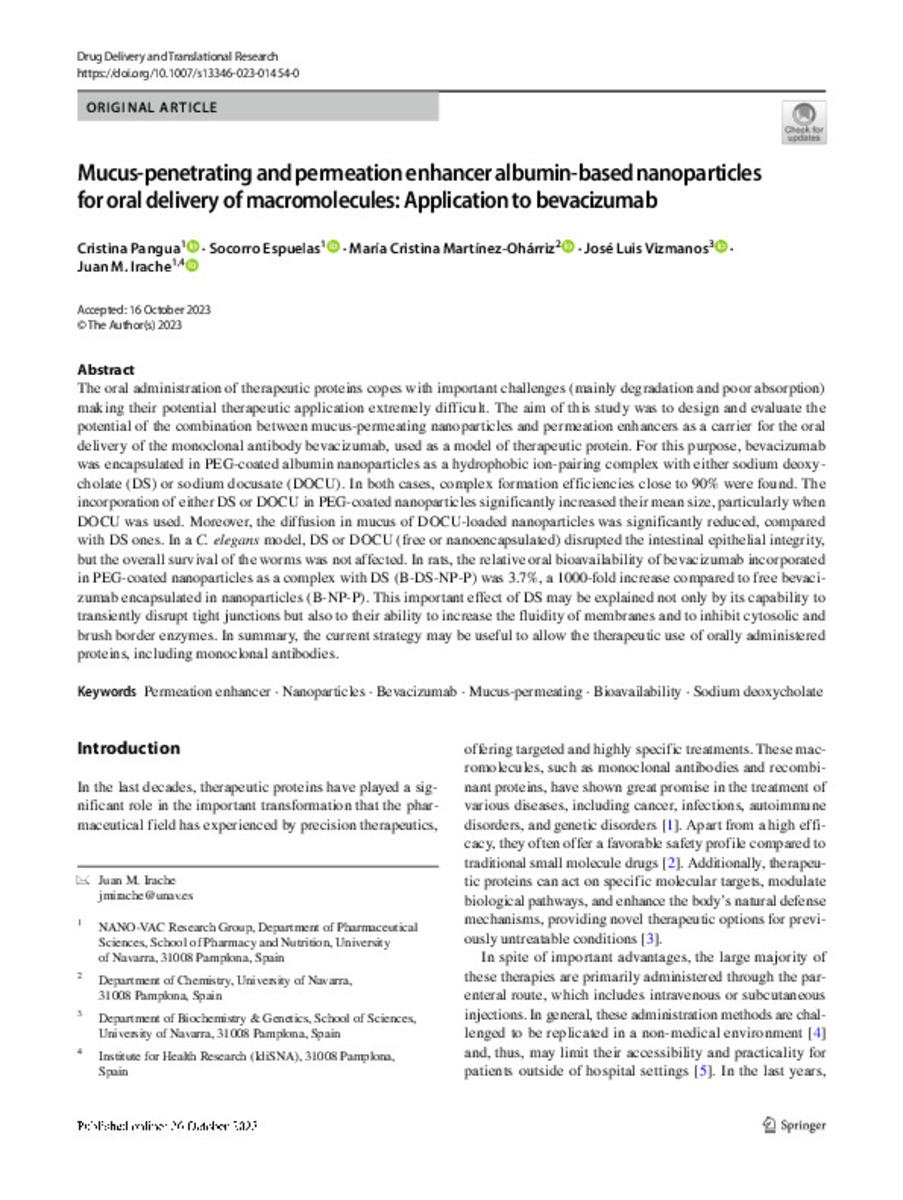Mucus‑penetrating and permeation enhancer albumin‑based nanoparticles for oral delivery of macromolecules: Application to bevacizumab
Keywords:
Permeation enhancer
Nanoparticles
Bevacizumab
Mucus-permeating
Bioavailability
Sodium deoxycholate
Editorial note:
The online version contains supplementary material available at https://doi.org/10.1007/s13346-023-01454-0
Note:
Creative Commons Attribution 4.0 International License
Citation:
Pangua, C., Espuelas, S., Martínez-Ohárriz, M.C. et al. Mucus-penetrating and permeation enhancer albumin-based nanoparticles for oral delivery of macromolecules: Application to bevacizumab. Drug Deliv. and Transl. Res. (2023). https://doi.org/10.1007/s13346-023-01454-0
Statistics and impact
0 citas en

0 citas en

Items in Dadun are protected by copyright, with all rights reserved, unless otherwise indicated.










